Key takeaways:
- Layering finishes enhances depth, richness, and emotional resonance, transforming simple designs into complex narratives.
- Selecting the right base finish is crucial as it sets the stage for subsequent layers and influences the overall mood of the piece.
- Combining different textures and paying attention to final details can significantly elevate a project’s aesthetic and emotional impact.

Introduction to layering finishes
Layering finishes is a fundamental technique in various creative fields, and it fascinates me how this method can completely transform a project. I still remember the first time I experimented with layering finishes in a personal art project; the depth and richness of color I achieved blew me away. Have you ever felt that thrill when a piece of work suddenly clicks into place? It’s truly a game-changer.
When we talk about layering finishes, we’re exploring the process of applying multiple coats or types of material to achieve a desired effect. Each layer adds its own character, creating complexity and depth that a single application simply can’t provide. I’ve often found that the interplay of textures and colors can evoke emotions I didn’t anticipate, leaving a lasting impression on both me and the viewer.
As you delve into layering finishes, it’s important to consider not just the practical aspects, but also the emotional resonance that each layer can create. Think about your own experiences: have you ever noticed how certain layers bring out feelings or memories? For me, layering is not just about aesthetics; it’s about storytelling through visual textures and colors, weaving a narrative into every piece I create.

Importance of layering in design
Layering in design is vital because it introduces depth and richness to a project, making it far more engaging. I remember once working on a room makeover where I layered paints and wallpapers. The space transformed beautifully, and I could see how the different textures wrapped around one another, creating a harmonious feel that one flat surface could never achieve.
In addition, each layer serves a unique purpose and can evoke various emotions. For instance, while working on a digital art piece, the top layer—a soft, translucent glaze—breathed life into the hues below, almost like a gentle morning mist. It reminded me of the comfort that familiar places elicit, reinforcing the idea that layers aren’t just about appearance; they connect us to our past and our feelings.
Finally, layering allows for experimentation and innovation—two things I consider essential in the creative process. I often reflect on how a single decision to add an unexpected color can shift the entire narrative of a piece. What layer have you added that transformed your project unexpectedly? That shift can lead to exploration and personal growth, both as a creator and as an audience member.
| Aspect | Importance |
|---|---|
| Depth and Dimension | Layering creates a three-dimensional quality that flat designs lack, enhancing visual interest. |
| Emotional Resonance | Different layers evoke specific feelings, connecting deeper with viewers. |
| Innovation and Experimentation | Layering encourages trying new combinations, leading to unexpected and exciting results. |

Selecting the right base finish
When selecting the right base finish, I’ve always leaned towards understanding the foundational impact it has on the overall look and feel of my work. Choosing a base finish isn’t just about color or texture; it’s about setting the stage for everything that follows. I recall a furniture restoration project where I initially opted for a glossy finish—I quickly learned that it reflected light beautifully, but it didn’t provide the warm, inviting atmosphere I wanted. Switching to a matte base transformed the piece, allowing the layered colors to speak for themselves and create a more cozy vibe.
Here are some key factors I consider when determining the base finish:
- Type of Material: The texture and nature of the underlying surface critically influence how finishes interact. I find that porous materials absorb paint differently than non-porous ones.
- Lighting Conditions: The way light plays on different finishes powerfully affects mood. I’ve learned that softer finishes create a gentle ambiance, whereas glossy finishes can make a space feel more vibrant.
- Intended Use: If a piece will be frequently handled, selecting a durable base is essential. I’ve chosen hard-wearing finishes for items like tabletops to withstand daily wear while keeping aesthetics in mind.
- Emotional Connection: Think about the feelings your finish may evoke. I always pause to reflect: what mood am I trying to create here? It’s a small step that leads to meaningful results.

Techniques for applying layered finishes
When it comes to applying layered finishes, I find that a dry brushing technique can be incredibly effective. I vividly remember a woodworking project where I used this method to add depth to a rustic table. By lightly brushing a contrasting color over the base, I managed to highlight the grain without overwhelming the original finish, creating an inviting, aged look. Have you tried dry brushing? It’s subtle yet transformative.
Another technique I often employ is the glazing method. This involves applying a thin layer of transparent color over a dry, opaque layer. I recall a time when I was updating a kitchen cabinet. The original paint was dull, but glazing it with a warm amber hue brought out the lovely details of the wood underneath. This shift not only enhanced the beauty of the piece but also made the entire kitchen feel cozier and more inviting.
Lastly, I can’t stress enough the importance of patience in layering finishes. Each layer needs adequate drying time to ensure that the final product is smooth and beautiful. I’ve learned this the hard way—I rushed a layering project once and ended up with unsightly smudges. So, my advice? Allow each finish to cure properly before moving on to the next. It might feel tedious, but the end result is worth the wait, and you’ll appreciate the richness it adds to your work. What’s a finish-layering moment you wish you had taken more time with?

Combining textures for depth
Combining different textures can truly elevate a project, creating a visual feast that draws the eye. I vividly recall a living room refresh where I layered a soft velvet throw over a chunky woolen blanket. The contrasting textures not only felt luxurious but also added depth to the space, making it feel more inviting. Have you ever experienced the cozy embrace of varied textures? It’s like wrapping yourself in comfort, both visually and physically.
In another project, I experimented with combining a rough reclaimed wood table with sleek, modern metal chairs. Initially, I was concerned that the two would clash, but instead, they complemented each other beautifully. The rustic wood added warmth, while the cool metal gave a contemporary edge. This balance created a conversation piece, and guests often comment on how the contrasts spark visual interest. It made me realize that sometimes the most unexpected pairings can reveal hidden depths.
I’ve also found that layering finishes with different textures can affect how a space feels emotionally. For instance, I once added a textured wallpaper to an otherwise minimalist room. The tactile quality drew people in and made the space feel more alive. I often wonder, how can we use texture to engage our senses and emotions? Through my experiences, I believe that thoughtfully combining textures not only enhances the aesthetics but also builds connections—inviting people to touch, feel, and truly engage with their surroundings.

Final touches and refinements
As I step into the final touches of a project, I often find myself reflecting on the power of small details. I remember finishing a DIY project for a friend’s nursery; I carefully applied a touch of gold leaf to the edges of a picture frame. It was fascinating to see how that tiny addition transformed the frame from ordinary to extraordinary, catching the light just right and adding a sense of magic to the space. Have you ever noticed how a little sparkle can elevate an entire room?
Refinements can also be about the finish itself. I once restored an old side table, and after applying multiple layers of a satin finish, I felt compelled to buff it gently. The difference was astounding; the surface became so smooth, radiating warmth and character. This led me to ponder: how often do we overlook the impact of a well-polished finish? It’s these nuances that truly breathe life into our creations, making them not just objects but cherished keepsakes.
Finally, never underestimate the impact of consistency in your final touches. In a recent project, where I painted a small accent wall, I was faced with the decision to match the wall’s color to existing furniture. When I took the time to ensure that the shades harmonized, the entire room felt cohesive and thoughtfully curated. Have you ever felt the magic that arises from a seamlessly tied-together palette? It’s those thoughtful refinements that encapsulate the essence of a well-executed layering approach, leaving a lasting impression on anyone who enters the space.
















